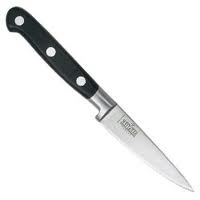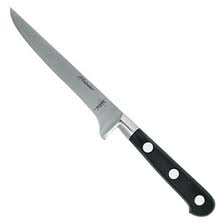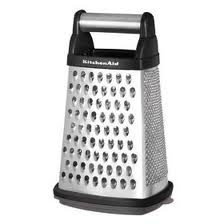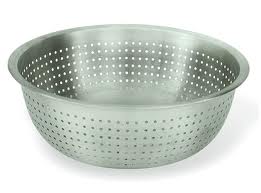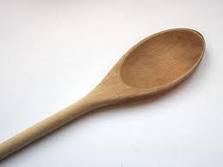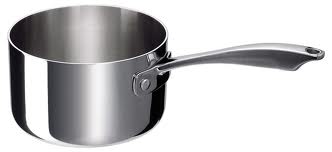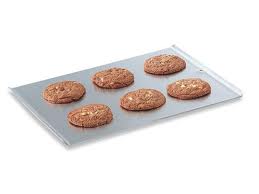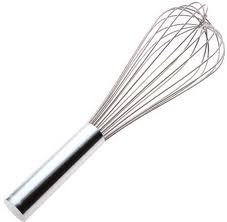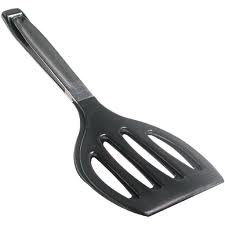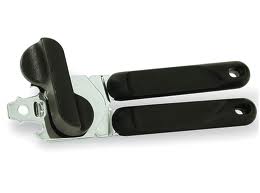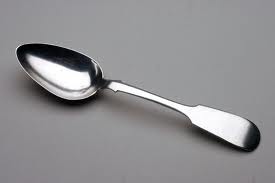Can You Identify These Kitchen Components? Quiz
(123).jpg)
Can you identify these kitchen components? Do you suppose you can conquer this quiz? The most common and straightforward kitchen component, besides the refrigerator, is the kitchen cabinet, which is a simple wood box. Cabinet parts include face frame, doors, hinges, and more. The quality of these components depends largely on the manufacturer. Take this quiz and see if you can identify these kitchen components.
- 1.
- A.
Bowl
- B.
Saucepan
- C.
Mixing bowl
Correct Answer
C. Mixing bowl -
- 2.
What type of knife is this?
- A.
Bread Knife
- B.
Pairing Knife
- C.
Chef's Knife
- D.
Steel
- E.
Boning Knife
Correct Answer
B. Pairing KnifeExplanation
A pairing knife is a small, versatile knife with a pointed tip and a narrow blade. It is commonly used for intricate tasks such as peeling, trimming, and slicing small fruits and vegetables. This type of knife is designed to have precise control and maneuverability, making it ideal for delicate cutting tasks. It is not suitable for heavy-duty tasks like chopping meat or cutting through bones, which are better suited for other types of knives such as a chef's knife or a boning knife.Rate this question:
-
- 3.
- A.
Kitchen Timer
- B.
Colander
- C.
Knives
- D.
Handmixer
- E.
Wok
Correct Answer
D. Handmixer -
- 4.
- A.
Knife
- B.
Rubber Scraper
- C.
Spatula
Correct Answer
B. Rubber Scraper -
- 5.
What type of knife is this?
- A.
Bread Knife
- B.
Pairing Knife
- C.
Chef's Knife
- D.
Boning Knife
Correct Answer
C. Chef's KnifeExplanation
A chef's knife is a versatile and multipurpose knife that is commonly used in professional kitchens and by home cooks. It has a broad, sharp blade that tapers to a point, allowing for precision cutting, slicing, and chopping of various ingredients. The length and weight of a chef's knife make it suitable for a wide range of tasks, including mincing herbs, dicing vegetables, and slicing meat. This type of knife is an essential tool for any cook and is often considered the most important knife in the kitchen.Rate this question:
-
- 6.
What type of knife is this?
- A.
Bread Knife
- B.
Pairing Knife
- C.
Chef's Knife
- D.
Boning Knife
Correct Answer
D. Boning KnifeExplanation
This knife is a boning knife, which is specifically designed for removing bones from meat, poultry, and fish. It has a narrow, sharp blade that allows for precise cuts and maneuverability around bones. The shape and flexibility of the blade make it easier to separate meat from bones, making it an essential tool for butchers and chefs who need to debone meat.Rate this question:
-
- 7.
- A.
Grater
- B.
Frying pan
- C.
Vegetable peeler
- D.
Grill
Correct Answer
A. Grater -
- 8.
- A.
Food processor
- B.
Pot
- C.
Rolling pin
- D.
Colander
Correct Answer
D. Colander -
- 9.
- A.
Thermometer
- B.
Wooden spoon
- C.
Mixing bowl
- D.
Spatula
Correct Answer
B. Wooden spoon -
- 10.
- A.
Grill
- B.
Casserole
- C.
Wok
- D.
Saucepan
Correct Answer
D. Saucepan -
- 11.
- A.
Cookie sheet
- B.
Cutting board
- C.
Strainer
- D.
Opener
Correct Answer
A. Cookie sheet -
- 12.
- A.
Pot
- B.
Lid
- C.
Whisk
- D.
Spatula
Correct Answer
C. Whisk -
- 13.
- A.
Whisk
- B.
Wooden turner
- C.
Turner
- D.
Spatula
Correct Answer
C. Turner -
- 14.
- A.
Kettle
- B.
Knife
- C.
Ice crean scoop
- D.
Can opener
Correct Answer
D. Can opener -
- 15.
- A.
Fork
- B.
Spoon
- C.
Knife
- D.
Teaspoon
- E.
Wooden spoon
Correct Answer
B. Spoon -
- 16.
What recipe resource is passed down from previous generations
- A.
Cookbooks
- B.
Family recipes
- C.
Internet recipes
- D.
Package labels
Correct Answer
B. Family recipesExplanation
Family recipes are passed down from previous generations as a recipe resource. These recipes are often treasured and kept within families, representing a cultural and culinary heritage. Unlike cookbooks, internet recipes, or package labels, family recipes hold sentimental value and are a way to preserve and continue traditions. They often include secret ingredients or special techniques that have been perfected over time, making them unique and cherished by generations.Rate this question:
-
- 17.
Which recipe part is NOT necessary, but is useful in planning foods to fit into an eating plan?
- A.
Container size and type
- B.
List of ingredients and amounts
- C.
Nutrition analysis
- D.
Yield
Correct Answer
C. Nutrition analysisExplanation
The nutrition analysis is not necessary, but it is useful in planning foods to fit into an eating plan. This analysis provides information about the nutritional content of the recipe, including the amount of calories, fat, protein, carbohydrates, vitamins, and minerals. It helps individuals make informed decisions about their food choices and ensures that the recipe aligns with their dietary needs and goals.Rate this question:
-
- 18.
Which part of a recipe tells how to prepare a food dish in the order it should be completed?
- A.
Container size and type
- B.
List of ingredients and amounts
- C.
Step-by-step directions
- D.
Temperature and time
Correct Answer
C. Step-by-step directionsExplanation
The step-by-step directions in a recipe provide a sequential guide on how to prepare a food dish in the order it should be completed. These directions outline the specific actions and techniques required at each stage of the cooking process, ensuring that the dish is prepared correctly and efficiently. By following the step-by-step directions, cooks can ensure that they are completing each task in the appropriate order, resulting in a successful and delicious final product.Rate this question:
-
- 19.
Which is an example of a non-essential ingredient in a recipe?
- A.
All purpose flour in a cake
- B.
Baking powder in biscuits
- C.
Mushrooms in a stir-fry
- D.
Shortening in a pie crust
Correct Answer
C. Mushrooms in a stir-fryExplanation
Mushrooms in a stir-fry are an example of a non-essential ingredient in a recipe. This means that the recipe can still be made without them and the dish will still turn out fine. The stir-fry will still be flavorful and complete without the mushrooms.Rate this question:
-
- 20.
Which is an example of an essential ingredient in a recipe?
- A.
Bell pepper in a casserole
- B.
Potatoes in a stew
- C.
Salt in a loaf of bread
- D.
Toasted almonds in a salad
Correct Answer
C. Salt in a loaf of breadExplanation
Salt is an essential ingredient in a recipe because it enhances the flavor of the dish and helps to balance other flavors. In the case of a loaf of bread, salt not only adds taste but also plays a crucial role in controlling the fermentation process and strengthening the gluten structure. Without salt, the bread would lack flavor, texture, and would not rise properly. Therefore, salt is a necessary ingredient in a loaf of bread.Rate this question:
-
- 21.
What is the abbreviation for tablespoon?
- A.
Tbsp
- B.
Tsp
- C.
Tbsp and T
- D.
Tsp and t
Correct Answer
C. Tbsp and TExplanation
The abbreviation for tablespoon is Tbsp and T.Rate this question:
-
- 22.
What is the abbreviation for teaspoon?
- A.
Tbsp
- B.
Tsp
- C.
Tbsp and T
- D.
Tsp and t
Correct Answer
D. Tsp and tExplanation
The abbreviation for teaspoon is "tsp" and "t".Rate this question:
-
- 23.
What is the abbreviation for pound?
- A.
Pnd
- B.
Pd
- C.
Ld
- D.
Lb
Correct Answer
D. LbExplanation
The abbreviation for pound is lb.Rate this question:
-
- 24.
What is the abbreviation for ounce
- A.
Onc
- B.
Ocz
- C.
O
- D.
Oz
Correct Answer
D. OzExplanation
The correct answer is "oz" which is the abbreviation for ounce. Ounce is a unit of weight commonly used in the imperial and US customary systems. The abbreviation "oz" comes from the Italian word "onza" which means ounce. This abbreviation is widely recognized and used internationally to denote the measurement of weight equal to 1/16th of a pound.Rate this question:
-
- 25.
Double a recipe with 3 teaspoons of minced garlic, what would you measure?
- A.
3t
- B.
2 tsp
- C.
2T
- D.
1 T
Correct Answer
C. 2TExplanation
To double a recipe with 3 teaspoons of minced garlic, you would measure 2 tablespoons (2T) of minced garlic.Rate this question:
-
- 26.
How do you measure liquid ingredients?
- A.
From above the measuring cup
- B.
From below the measuring cup
- C.
From eye level with the measuring cup
- D.
All of the above
Correct Answer
C. From eye level with the measuring cupExplanation
When measuring liquid ingredients, it is important to measure them from eye level with the measuring cup. This ensures accuracy and consistency in the measurement. Measuring from above or below the measuring cup can lead to incorrect measurements due to the distortion caused by the angle. By measuring from eye level, you can ensure that the liquid fills the cup to the correct level, providing an accurate measurement. Therefore, measuring from eye level with the measuring cup is the correct method for measuring liquid ingredients.Rate this question:
-
- 27.
Do liquid ingredients weigh the same as dry ingredients?
- A.
Yes
- B.
No
Correct Answer
B. NoExplanation
Liquid ingredients do not weigh the same as dry ingredients. This is because liquids have a different density than solids. Density is the mass of a substance per unit volume. Since liquids are less dense than solids, a given volume of liquid will weigh less than the same volume of a dry ingredient. Therefore, the weight of liquid ingredients will be different from the weight of dry ingredients.Rate this question:
-
- 28.
Triple this ingredient. 1/4 cup.
- A.
1/2 cup
- B.
1/2 cup and 1/4 cup
- C.
2/4 cup
- D.
1/2 cup and 3/4 cup
Correct Answer
B. 1/2 cup and 1/4 cupExplanation
To triple the ingredient, we need to multiply it by 3. 1/4 cup multiplied by 3 equals 3/4 cup. Therefore, the answer is 1/2 cup and 1/4 cup.Rate this question:
-
- 29.
Double this. 2 teaspoons
- A.
2 t
- B.
4T
- C.
1T
- D.
1T and 1t
Correct Answer
D. 1T and 1tExplanation
The given options represent different measurements of teaspoons and tablespoons. "2 t" means 2 teaspoons, "4T" means 4 tablespoons, and "1T" means 1 tablespoon. "1T and 1t" means 1 tablespoon and 1 teaspoon. Therefore, the answer "1T and 1t" represents the correct measurement of double the amount of 2 teaspoons.Rate this question:
-
- 30.
Triple this. 1/3 cup
- A.
2/3 cup
- B.
4/3 cup
- C.
1 cup
- D.
3 cups
Correct Answer
C. 1 cupExplanation
The given options represent different measurements of cups. The phrase "Triple this" indicates that the answer should be three times the initial measurement of 1/3 cup. Therefore, the correct answer is 1 cup, as it is three times 1/3 cup.Rate this question:
-
- 31.
Double this. 1/2 tsp
- A.
1T
- B.
1 Tbsp
- C.
1 t
- D.
1/2 T
Correct Answer
C. 1 tExplanation
The correct answer is 1 t because "t" is the abbreviation for teaspoon, and the instruction "Double this" implies that the given measurement of 1/2 tsp should be doubled, resulting in 1 teaspoon.Rate this question:
-
- 32.
Double this. 1 1/2 tsp.
- A.
3 T
- B.
1 T
- C.
1 t
- D.
2 t
Correct Answer
A. 3 TExplanation
The correct answer is 3 T because "Double this" indicates that the given measurement of 1 1/2 tsp should be multiplied by 2. Therefore, 1 1/2 tsp x 2 = 3 T (tablespoons).Rate this question:
-
Quiz Review Timeline +
Our quizzes are rigorously reviewed, monitored and continuously updated by our expert board to maintain accuracy, relevance, and timeliness.
-
Current Version
-
Mar 21, 2023Quiz Edited by
ProProfs Editorial Team -
Oct 19, 2015Quiz Created by
Jill.confer.bsd
 Back to top
Back to top




